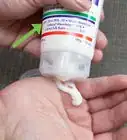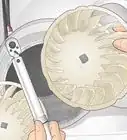This article was co-authored by Diana Yerkes. Diana Yerkes is a Skincare Professional and the Lead Esthetician at Rescue Spa in New York City, New York. With over 15 years of experience, Diana helps others with their skin care needs by incorporating natural and high-performing products and treatments into their routines while providing nutrition insights and educating clients on better skin care habits. Diana is a member of the Associated Skin Care Professionals (ASCP) and holds certifications from the Wellness for Cancer and Look Good Feel Better programs. She received her esthetics education from the Aveda Institute, the International Dermal Institute, and the Biologique Research Academy.
There are 7 references cited in this article, which can be found at the bottom of the page.
wikiHow marks an article as reader-approved once it receives enough positive feedback. This article received 31 testimonials and 97% of readers who voted found it helpful, earning it our reader-approved status.
This article has been viewed 1,128,754 times.
Pumice is created when hot lava cools so quickly that the process traps gas bubbles in the hardening material, resulting in a porous and abrasive stone perfect for sloughing away dry skin.[1] To use a pumice stone, soften the calloused skin in warm water, wet the stone, then gently rub the stone over the area using circular motions until you remove the dead skin. In addition to its primary purpose exfoliating skin, you can also use pumice to remove hair, remove pills from fabric, and even clean your toilet.
Things You Should Know
- Soak your skin in warm water for a few minutes to soften it. Wet the pumice stone and rub it gently over calloused areas to slough off dead skin.
- Clean the pumice stone with a scrub brush and let it air-dry between uses.
- Remove pilling and lint from clothing by rubbing the pumice stone in circular motions. You can also scrub toilet stains with a pumice stone.
- Dedicate each pumice stone to one purpose (removing dead skin, cleaning the toilet, etc.) Avoid using a single pumice stone for multiple purposes.
Steps
Exfoliating With a Pumice Stone
-
1Soak your calloused skin in warm water. The most common part of the body to exfoliate with a pumice stone is the feet. Heels tend to develop a layer of hard, calloused skin that can become cracked or scaled. Your elbows are another area that may benefit from exfoliation. Soak the calloused body part in warm water for about five minutes to soften the skin.[2]
- If you're working on your feet, you may want to fill a bowl with warm water and soak your feet in the bowl.
- For other parts of the body, pumicing as part of your shower may be easiest.
-
2Wait until your dry skin has softened. The skin will be easier to remove if it's soft and supple. Feel your skin after several minutes of soaking. If it still feels tough, wait a few more minutes (giving the water a warm-up if necessary). If it's soft, your skin is ready for the pumice stone.[3]Advertisement
-
3Wet the stone. Wetting the stone will help it slide more easily across your skin, rather than catching on it. Run the stone under warm water, or dip it in the water where you're soaking your skin, in order to thoroughly wet it.[4]EXPERT TIPDiana Yerkes is a Skincare Professional and the Lead Esthetician at Rescue Spa in New York City, New York. With over 15 years of experience, Diana helps others with their skin care needs by incorporating natural and high-performing products and treatments into their routines while providing nutrition insights and educating clients on better skin care habits. Diana is a member of the Associated Skin Care Professionals (ASCP) and holds certifications from the Wellness for Cancer and Look Good Feel Better programs. She received her esthetics education from the Aveda Institute, the International Dermal Institute, and the Biologique Research Academy.Skincare Professional

 Diana Yerkes
Diana Yerkes
Skincare ProfessionalPro Tip: You especially want to remove calluses from your heels during the summertime when you'll be wearing sandals.
-
4Rub it gently over the calloused area. Use a circular motion to start sloughing away the dead skin with the pumice stone. If the skin is nice and soft, it should start coming right off. Keep going until you remove the dead skin and get to the fresh, supple skin underneath.
- Don't press too hard. Light pressure is all that is needed; let the surface of the stone do the work.
- If you're working on your feet, focus on the heels, the sides of your toes, and other areas where dry skin tends to build up.
-
5Rinse and repeat. Rinse off the dead skin and take a look to see if you need to keep going. If you still see bits of dead skin, go over the area again with the pumice stone. Continue using the stone on the area until you're satisfied with the results.
- Since the pumice stone will wear down slightly while you use it, you may need to turn it over to get a fresh surface you can use to exfoliate your skin.
- Rinse the pumice stone often to keep its surface clean and effective.
-
6Dry and moisturize your skin. When you're finished, use a towel to pat your skin dry. Coat the area with an oil or cream to prevent it from drying out too quickly. Your formerly calloused skin should now be soft, supple and gleaming.
- Coconut oil, almond oil, or body lotion are all fine to use to condition your skin after pumicing.
- Repeat as often as needed to keep your skin in good shape.
Caring for a Pumice Stone
-
1Scrub it after use. Dead skin will build up in the pores of the stone as you use it, so you'll want to clean the stone after use. Use a scrub brush to scrub the stone while holding it under running water. Add a bit of soap to help clean the stone completely. This way your stone will be clean and ready to use next time you need it.
-
2Allow it to completely dry out. Set the pumice stone in a dry place so that it doesn't stay damp in between uses.[5] Some pumice stones come with a string attached that allows you to hang the stone to dry. If you let the stone stay wet, bacteria could grow in the pores, making it unsafe to use.
-
3Boil it if necessary. Every once in a while, you'll want to give the stone a deep cleaning to make sure it isn't harboring bacteria. Bring a small pot of water to a full boil, drop in the stone, and boil it for five minutes. Use tongs to remove the stone from the water and allow it to dry completely before storing.
- If you use the stone frequently, boil it every two weeks to ensure it stays clean.
- If you've used the stone on a dirty surface, you can add a capful of bleach to the water to be certain all bacteria get killed.
-
4Replace the stone when it wears down. Pumice is a soft stone that will eventually wear away after you've used it for a while. When it gets too small to handle easily, or the surface becomes too smooth to be effective, go ahead and spring for a new one. Pumice stones are inexpensive and can be found at any store that sells beauty supplies.
Exploring Other Uses
-
1Use it to remove hair. The ancient Greeks used pumice to remove body hair, and some still use it for this purpose. Pumice makes a gentle natural hair remover. Soak your skin in the bath or in a shower until it's warm and soft. Wet the pumice stone, then rub your skin using a gentle circular motion. Within about 30 seconds, the area you're rubbing will be free of hair.
- The effects of pumicing are similar to the effects of shaving. The hair is removed close to the skin, rather than being pulled out.[6]
- Pumicing should not be painful. If you feel pain, make sure you aren't pressing too hard.
-
2Use it to remove pills from clothing. The soft, porous surface of pumice is perfect for taking pills and lint off of clothing. If you have a sweater you've been wanting to clean up, lay it on a flat surface. Rub a dry pumice stone over the pills in a circular motion. Don't press too hard, since you don't want to damage the fibers of the garment; a gentle pressure is all that's needed to take the pills right off.[7]
-
3Use it to clean your toilet. Pumice can be used to remove copper rings from the inside of a toilet. Put on a pair of nonporous cleaning gloves to start. Then simply rub the pumice stone over the ring using a scrubbing motion. Repeat until the ring is gone.[8]
- You can use the stone in combination with toilet cleaner for more stubborn stains.
- Be sure to use separate stones for toilet cleaning and body use. Do not use the same stone for both purposes.
Community Q&A
-
QuestionAre pumice stones safe to use?
 Catherine Cheung, DPMDr. Catherine Cheung is a board certified Podiatrist based in San Francisco, California. Dr. Cheung specializes in all aspects of foot and ankle care, including complex reconstruction. Dr. Cheung is affiliated with the Brown & Toland Physicians and the Sutter Medical Network. She earned a DPM from the California College of Podiatric Medicine, completed her residency at the Encino Tarzana Medical Center, and completed a fellowship at the Kaiser Permanente San Francisco Medical Center. She is board certified by the American Board of Podiatric Surgery.
Catherine Cheung, DPMDr. Catherine Cheung is a board certified Podiatrist based in San Francisco, California. Dr. Cheung specializes in all aspects of foot and ankle care, including complex reconstruction. Dr. Cheung is affiliated with the Brown & Toland Physicians and the Sutter Medical Network. She earned a DPM from the California College of Podiatric Medicine, completed her residency at the Encino Tarzana Medical Center, and completed a fellowship at the Kaiser Permanente San Francisco Medical Center. She is board certified by the American Board of Podiatric Surgery.
Board Certified Podiatrist As long as you're gentle and use them in water, pumice stones are pretty easy and safe to use.
As long as you're gentle and use them in water, pumice stones are pretty easy and safe to use. -
QuestionCan I use pumice stone for dark underarms?
 wikiHow Staff EditorThis answer was written by one of our trained team of researchers who validated it for accuracy and comprehensiveness.
wikiHow Staff EditorThis answer was written by one of our trained team of researchers who validated it for accuracy and comprehensiveness.
Staff Answer wikiHow Staff EditorStaff AnswerYou can use a pumice stone to gently rub under your arms but it will only remove dead skin buildup (which may have caused skin discoloration). It won’t lighten your natural skin color beneath any grime but can have the benefit of keeping this area nicely clean and therefore brighter in appearance. If used often, in some cases it may even remove some underarm hair permanently but this is not guaranteed.
wikiHow Staff EditorStaff AnswerYou can use a pumice stone to gently rub under your arms but it will only remove dead skin buildup (which may have caused skin discoloration). It won’t lighten your natural skin color beneath any grime but can have the benefit of keeping this area nicely clean and therefore brighter in appearance. If used often, in some cases it may even remove some underarm hair permanently but this is not guaranteed. -
QuestionCan I use a pumice stone near my nose for whiteheads?
 wikiHow Staff EditorThis answer was written by one of our trained team of researchers who validated it for accuracy and comprehensiveness.
wikiHow Staff EditorThis answer was written by one of our trained team of researchers who validated it for accuracy and comprehensiveness.
Staff Answer wikiHow Staff EditorStaff AnswerA pumice stone is not recommended for use on facial skin because this skin is delicate and using a pumice stone may cause it to redden and even break. If used on whiteheads, scrubbing too hard can lead to skin ruptures or even bleeding, which will be painful and may also cause infection. It is best to find gentler, more effective treatments for your nose whiteheads, for example, see How to Stop Whiteheads.
wikiHow Staff EditorStaff AnswerA pumice stone is not recommended for use on facial skin because this skin is delicate and using a pumice stone may cause it to redden and even break. If used on whiteheads, scrubbing too hard can lead to skin ruptures or even bleeding, which will be painful and may also cause infection. It is best to find gentler, more effective treatments for your nose whiteheads, for example, see How to Stop Whiteheads.
Warnings
- Do not rub the pumice stone too hard on your skin, it may cause skin tears that can become infected.⧼thumbs_response⧽
References
- ↑ https://geology.com/rocks/pumice.shtml
- ↑ http://www.webmd.com/a-to-z-guides/calluses-and-corns-using-pumice-stones-topic-overview
- ↑ https://www.youtube.com/watch?v=xv63OJixJtI
- ↑ https://www.youtube.com/watch?v=xv63OJixJtI
- ↑ https://www.footfiles.com/subject/pumice-stone
- ↑ http://www.wisegeek.com/what-are-the-best-tips-for-pumice-hair-removal.htm#didyouknowout
- ↑ https://experthometips.com/uses-for-a-pumice-stone
- ↑ https://www.apartmenttherapy.com/removing-toilet-ring-stain-wit-45062
About This Article
To use a pumice stone, start by soaking the part of your body you want to exfoliate in warm water for 5 minutes, which will help soften your skin. Then, wet the pumice stone with warm water and gently rub it over your skin using a circular motion. Keep rubbing until you've removed all of the dry or calloused skin in the area. When you're finished, rinse off the pumice stone and apply some moisturizer to your skin. For tips on caring for a pumice stone so it lasts longer, scroll down!
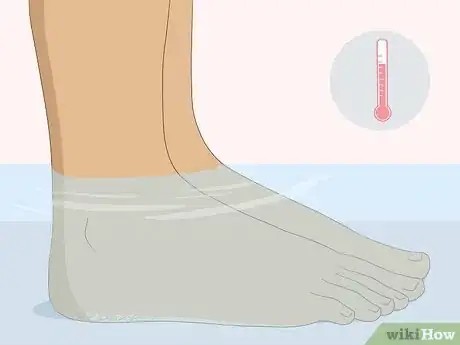

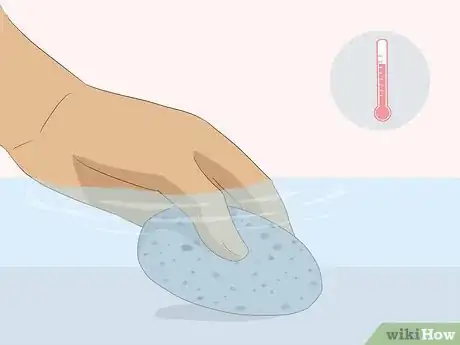
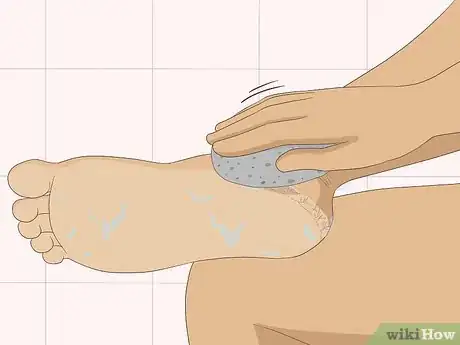
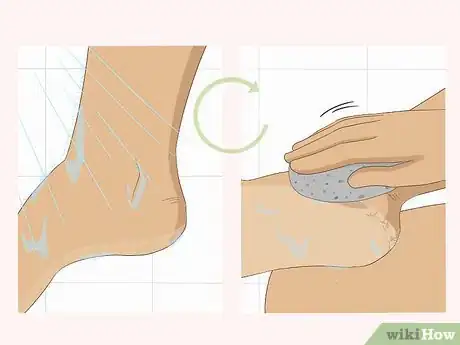
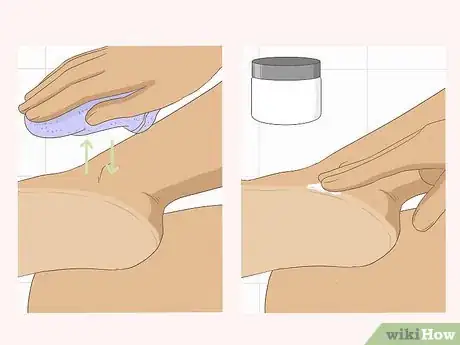
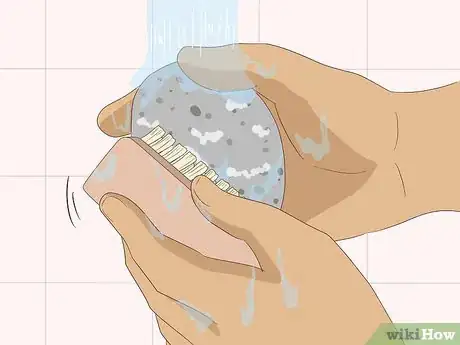
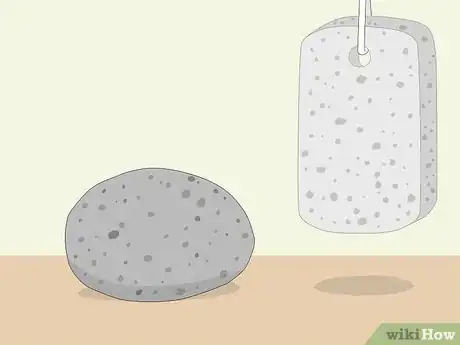
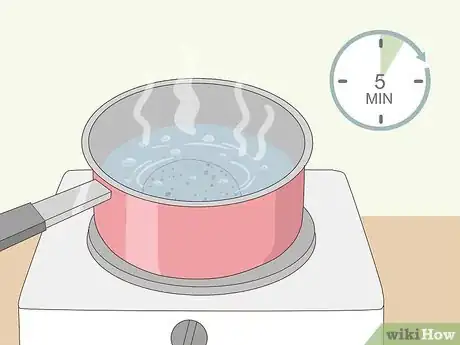
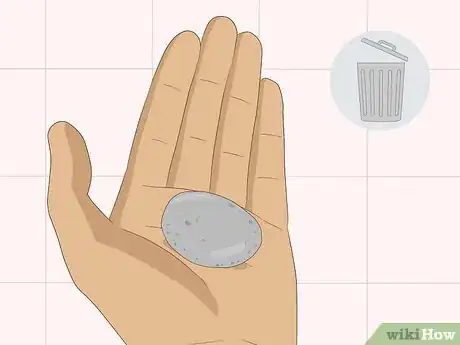
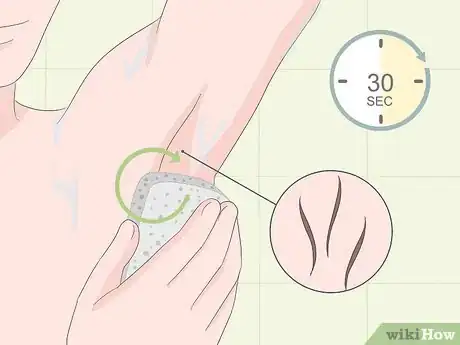
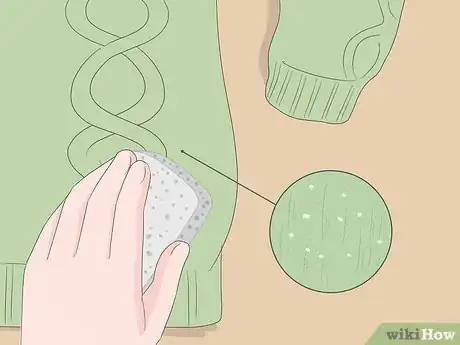





-Step-8-Version-3.webp)










